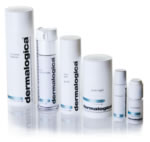 Hyper-pigmentation is the name given to those patches of skin that become darker than the surrounding tissue. Created by an increase in the localised production of melanin (the pigment that gives your skin its colour), hyper-pigmentation can be caused by a number of triggers:
Hyper-pigmentation is the name given to those patches of skin that become darker than the surrounding tissue. Created by an increase in the localised production of melanin (the pigment that gives your skin its colour), hyper-pigmentation can be caused by a number of triggers:
- The sun. Our old enemy the sun causes our skin to produce melanin as protection form the UV rays, although the presence of a tan already indicates damage. Sometimes too much melanin is produced and the skin remains darker permanently.
- Inflammation. This can be the result of an injury to the skin or by a skin condition like acne. As the redness and swelling subsides it can leave behind post-inflammatory changes to the pigmentation.
- Hormones. Pregnancy is a typical example of the effects that changing levels of hormones can have on the skin: the mask of pregnancy is a common one, but hyper pigmentation can also occur elsewhere during this time (e.g. on the abdomen).
- Medication. If you take medication that advises avoiding exposure to the sun, the chances are it raises the risk of hyper-pigmentation. If in doubt, talk to your doctor.
The first step in dealing with hyper-pigmentation is to prevent it from getting worse. In order to do this, you will need to make sure you wear sunblock every day (check out Dermalogica’s Solar Defence System).
The Chroma White TRx System of skincare has been designed specifically to improve the appearance of hyper-pigmented skin, while evening out tone and brightening the complexion. Tackle dark patches of skin his way rather than layering on the foundation; your skin will thank you for it!
